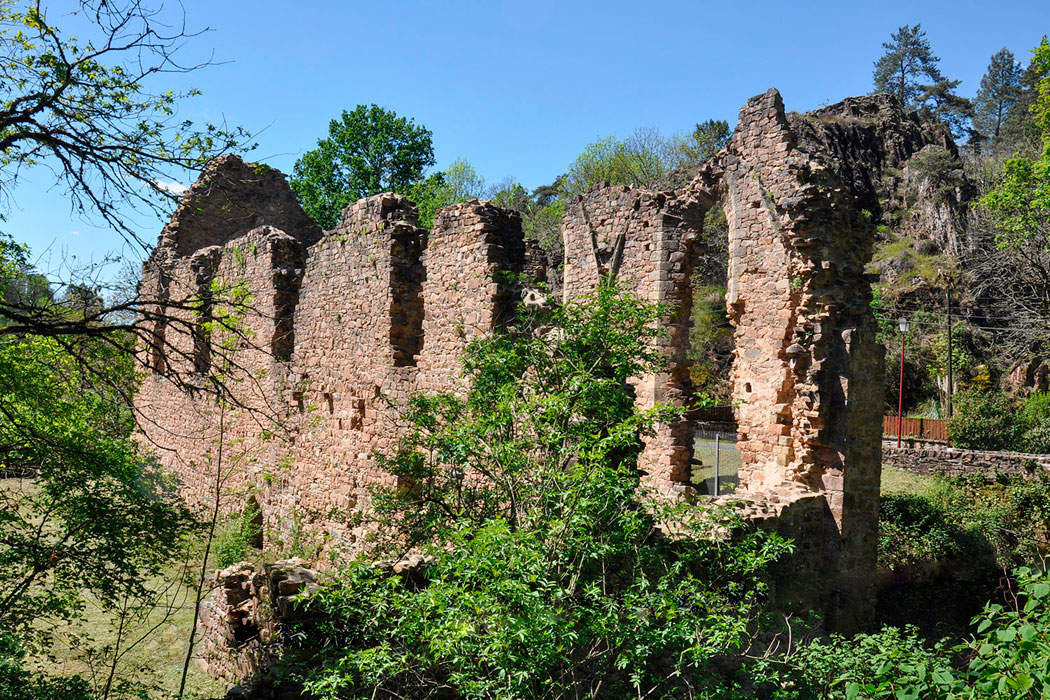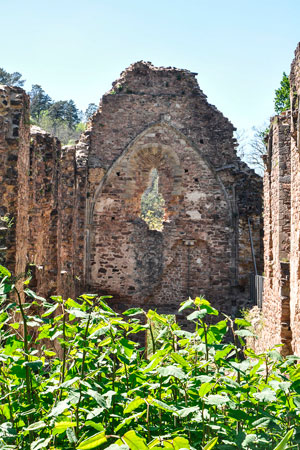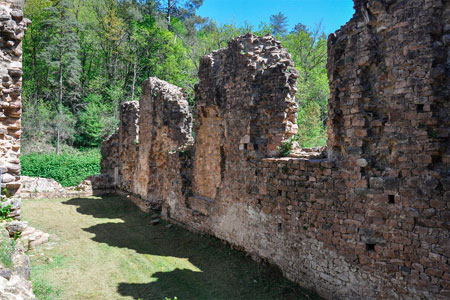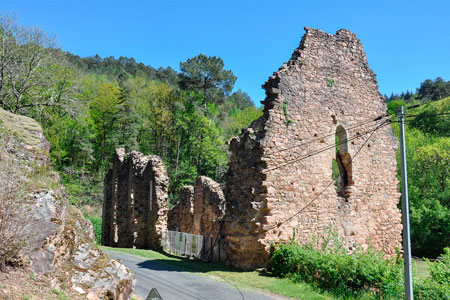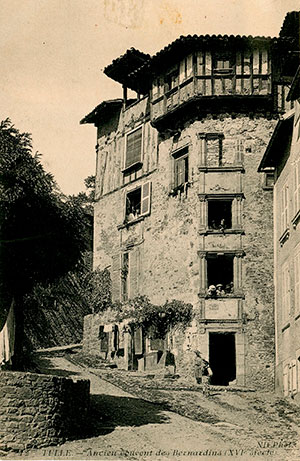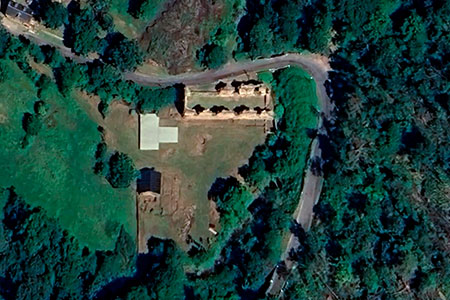Priory of Coyroux
Prieuré de Coyroux / Coyros / Coyresium / Bernardines of Tulle
(Aubazine, Corrèze)
In parallel with the formation and establishment of the Cistercian monastery of Notre-Dame d’Obazine, which had eremitic roots, a community of women gradually came together between the years 1130 and 1140. At that time, the Cistercian Order did not yet officially recognise the female branch, although there were developments in that direction — from the priory of Jully (Yonne) to the female abbey of Notre-Dame de Tart (Côte-d’Or), considered the first Cistercian house for women.
The foundation of the Priory of Coyroux took place in 1142, when Stephen of Vielzot († 1159), founder of Obazine, began construction of that monastery and, at the same time, of Coyroux, located less than a kilometre to the southeast. The female community moved there permanently. From that point on, Obazine ceased to be a double monastery, where until then there had been separate quarters reserved for women.
Coyroux was characterised by the imposition of perpetual and extremely strict enclosure. Spiritual care and the administration of the sacraments were entrusted to a monk from Obazine, who was not allowed access to the nuns’ enclosure. In the church, a wall with small windows separated them. They also had no economic independence, as they were subject to the administration of the mother house. It is worth noting that the female community may have included as many as 150 nuns, whose livelihood depended entirely on the male monastery.
Over time, the strictness of monastic life eased, and women from affluent families were allowed to enter. The community was no longer as numerous and, by 1343, counted only around twenty nuns. It also began receiving episcopal support and gained control over some parishes. Following the guidelines of the Council of Trent, the nuns left this isolated location and moved to Tulle. The ruins of the monastery of Coyroux are still preserved, located very close to the stream that gives the site its name, which made it necessary to build defences against flooding. The site has been excavated and studied with the aim of understanding its architectural history.
- ALBE, Abbé (1905). Les religieuses de Coyroux, près d’Obasine (1345-1355). Bulletin de la Société scientifique historique et archéologique de la Corrèze, vol. 27
- ANDRAULT-SCHMITT, Claude (2021). La matérialisation de la subordination et de la stricte clôture à Coyroux d’Obazine: XIIe ou XIIIe siècle?. Annales du Midi, vol. 133
- BARRIÈRE, Bernadette (1977). L’abbaye cistercienne d’Obazine en Bas-Limousin. Les origines – Le patrimoine. Tulle: Conseil G. De la Corrèze
- BARRIÈRE, Bernadette (1990). Les problèmes économiques d'une communauté cistercienne double : le cas d'Obazine-Coyroux (XIIe-XVIIIe siècles). Annales du Midi, vol. 102
- BAUDRILLART, Alfred (1956). Dictionnaire d'histoire et de géographie ecclésiastiques. Vol. 13. París: Letouzey et Ané
- DESBORDES, Jean Michel (1982). Corrèze, Aubazine : monastère de Coyroux. Bulletin Monumental, vol. 140
- FOROT, Victor (1911). Les Bernardines de Tulle. Limoges-illustré
- ROY DE PIERREFITTE, J.-B. L. (1857-63). Études historiques sur les monastères du Limousin & de la Marche, vol. 1. Guêret: Betoulle
- VAYSSIÈRE, A. (1883). Les dames de Coyroux. Bulletin de la Société scientifique historique et archéologique de la Corrèze, vol. 5
